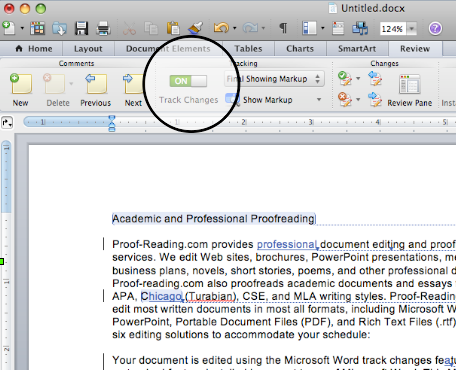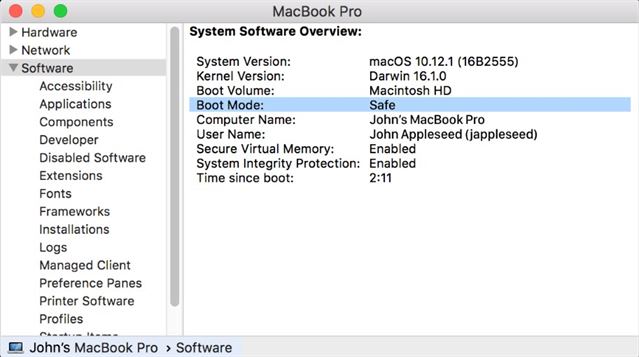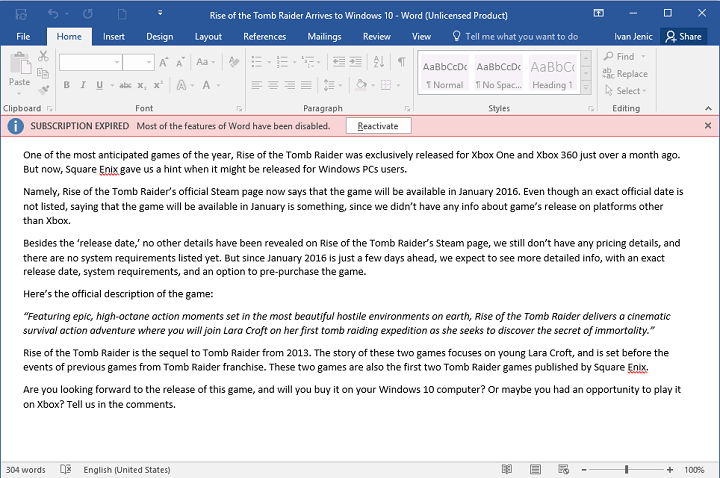Word for Mac crashes and slow performance. Word does not respond when using 'Save as Picture' WordRake add-in causing Word for Mac to crash since upgrading to Catalina (OSX 15.0) Problems launching Word for Mac 2016 (Version 16.11) FIXED Issues affecting Word for Mac features and add-ins WORKAROUND Word document save as a PDF to an online.
- Office 365 becomes Microsoft 365 on April 21. New name, more benefits, same price. Choose Office for your Mac and PC. Create your best work with Office 365, and get 1 TB of OneDrive cloud storage for your photos and files. The Office experience you know and love, built for your Mac, PC, iOS and Android devices. Up to 6 people, across.
- There are two kinds of add-ins: Office Add-ins from the Office Store (which use web technologies like HTML, CSS and JavaScript) and add-ins made by using Visual Basic for Applications (VBA). If you're looking for a built-in add-in such as Solver or Analysis ToolPak.
Note
Office 365 ProPlus is being renamed to Microsoft 365 Apps for enterprise. For more information about this change, read this blog post.
Symptoms
When you save a Word for Mac document, the application crashes or quits unexpectedly.
Resolution
Step 1: Download and install all Office updates
To obtain updates with Office for Mac applications, follow these steps:
Microsoft AutoUpdate for Mac, which comes with Office, can keep your Microsoft software up to date. When AutoUpdate is set to check for updates automatically on a daily, weekly, or monthly basis, there's no need to search for critical updates and information; AutoUpdate delivers them directly to your computer. To do this:
- Start any Office for Mac application on your computer.
- Click Help menu, click Check for Updates.
For additional information about Office for Mac updates, seeWhere and how to obtain Office for Mac software updates.
If the issue continues to occur, proceed to the next step.
Step 2: Check the hard disc name
Make sure that your hard disc has a name. The name cannot be all numbers but can contain numbers. The name must start with a letter. It must not contain any special characters, such as periods, commas, semi-colons, quotation marks, and so on.
Step 3: Save to a different location
If you are saving a file in your Documents folder, instead try saving the file to the desktop or to a different location.
Remember that there is a 255-character limit to the file name, and the path of the saved file is included in the name. For example, a file that is saved to the desktop has the path 'HDusersyour user nameDesktop.' These characters are counted toward the 255-character limit.
If you want to save to a network share or to an external device (such as a flash drive), first save the file to your local hard disc. If you can save the file to the hard disc (your Documents folder), there is nothing wrong with the Excel installation or with the file. If you cannot save to your local hard disc, go to step 3.
If you cannot save the file to an external device, contact Apple or the manufacturer of the external device. If you cannot save to a network share, contact the network administrator (your IT department) or the owner of the share. If you do not have an IT department and you want to save to a network, contact Microsoft Professional Support.
Step 4: Empty the AutoRecovery folder

Important
The location of certain files are different if you have Service Pack 2 (SP2) installed. To check if it is installed, open Word, and then click About Word from the Word menu. If the version number is 14.2.0 or above, you have Service Pack 2 and you should follow the Service Pack 2 steps when provided in this article.
If there are too many items in the AutoRecovery folder (userDocumentsMicrosoft User DataOffice 2008 AutoRecovery or Office 2010 AutoRecovery), this can cause memory problems and save problems because these files are loaded into memory when Word is started.
Move AutoRecovery files to the desktop or to another folder to see whether they are causing the problem. To do this, follow these steps:
To empty the AutoRecovery folder, follow these steps if have version 14.2.0 (also known as Service Pack 2) installed:
Quit all applications.
On the File menu, click New Folder.
A new folder is created on the desktop. The folder will be called 'New Folder.'
On the Go menu, click Home.
Open Library.
Note
The Library folder is hidden in Mac OS X Lion. To display this folder, hold down the OPTION key while you click the Go menu.
Open Application Support, and then open Microsoft.
Open Office 2011 AutoRecovery.
On the Edit menu, click Select All.
Drag all files into 'New Folder' on the desktop.
The AutoRecovery folder should be empty.
Open Excel for Mac 2011 and try to save a file.
If you can save a file, review the contents of 'New Folder' to decide which files that you want to keep.
If the problem continues to occur, go to the next method.
To empty the AutoRecovery folder, follow these steps if you do not have Service Pack 2 installed:
Quit all applications.
On the File menu, click New Folder.
A new folder is created on the desktop. The folder will be called 'New Folder.'
On the Go menu, click Documents.
Open Microsoft User Data, and then open Office 2011 AutoRecovery.
On the Edit menu, click Select All.
Drag all files into 'New Folder' on the desktop.
The AutoRecovery folder should be empty.
Open Excel for Mac 2011 and try to save a file.
If you can save a file, review the contents of 'New Folder' to decide which files that you want to keep.
If the problem continues to occur, go to the next method.
Step 5: Remove Word preferences
Note
Removing the preferences will remove any customizations that you made. These customizations include changes to toolbars and custom dictionaries and keyboard shortcuts that you created.
Quit all Microsoft Office for Mac applications.
On the Go menu, click Home.
Open Library.
Note
The Library folder is hidden in Mac OS X Lion. To display this folder, hold down the OPTION key while you click the Go menu.
Open Preferences.
Look for a file that is named com.microsoft.Word.plist.
If you locate the file, move it to the desktop. If you cannot locate the file, the application is using the default preferences.
If you locate the file and move it to the desktop, start Word, and check whether the problem still occurs. If the problem still occurs, quit Word, and then restore the file to its original location. Then, go to the next step. If the problem seems to be resolved, you can move the com.microsoft.Word.plist file to the trash.
Quit all Office for Mac applications.
On the Go menu, click Home.
Open Library.
Note
The Library folder is hidden in Mac OS X Lion. To display this folder, hold down the OPTION key while you click the Go menu.
Open Preferences, and then open Microsoft.
Locate the file that is named com.microsoft.Word.prefs.plist.
Move the file to the desktop.
Start Word, and then check whether the problem still occurs. If the problem still occurs, quit Word, and restore the file to its original location. Then, go to the next step. If the problem seems to be resolved, you can move the com.microsoft.Word.prefs.plist file to the trash.
On the Go menu, click Home.
Open Library.
Note
The Library folder is hidden in Mac OS X Lion. To display this folder, hold down the OPTION key while you click the Go menu.
Open Application Support, and then open Microsoft.
Open Office, and then open User Templates.
Locate the file that is named Normal, and then move the file to the desktop.
Start Word, and then check whether the problem still occurs. If the problem seems to be resolved, you can move the Normal file to the Trash. If the issue continues to occur, go to the next step.
Step 6: Create a new user account
Sometimes, user-specific information can become corrupted. This can interfere with installing or using the application. To determine whether this is the case, you can log on as a different user or create a new user account, and then test the application.
If the issue occurs even when you use the alternative account, go to the next step.
Step 7: Test saving the file in safe mode
Try to save when the computer is operating in safe mode. If you can save while in safe mode, the problem probably concerns software that is running in the background.

For information about how to enter safe mode in Mac OS, seeClean startup to see if background programs are interfering with Office for Mac.
More information
If the steps in this article did not resolve the issue, visit the Mac forums for possible resolutions/workarounds.
To work together in Word for the web, you edit a document as you normally would. If others are also editing it, Word for the web alerts you to their presence, and shows you the paragraph they’re working on. There’s no special co-authoring mode and no command to begin co-authoring.
As authors come and go, Word for the web notifies you briefly.
You can always see who is currently working in the document by clicking near the top of the window.
A colored indicator shows you where others are editing the document.
Opening the document in your desktop application

Microsoft Word 2011 Mac Locking Up Computer
If you want to make changes that require features of the Word desktop application, click Open in Word and continue editing. For example, you might want to add a table of contents or a bibliography whose entries update automatically.
Note: Co-authoring in the Word desktop application requires Word 2010, Word 2013, or Microsoft Word for Mac 2011.
In the Word desktop application, be careful not to introduce content or functionality to the document that will prevent other authors from editing the document in Word for the web. For example, don’t use permission features such as editing restrictions or marking the document as final. If you want to restrict access to the document, use the permission features where the document is stored (OneDrive, Office 365, or SharePoint).
If someone does save the document with features that aren’t supported by Word for the web, you can still co-author, just not in Word for the web anymore. If everyone in the group has Word 2010, Word 2013, or Word for Mac 2011, continue working together in Word (click Open in Word and continue editing).
If someone in the group doesn’t have one of those versions of Word, you need to remove the unsupported features from the document so that everyone can continue to work together in Word for the web. Do the following:
In Word for the web, click Open in Word (requires Word 2003, or later, or Word for Mac 2008 12.2.9 or later).
In the Word desktop application, remove the unsupported features. For details about what’s supported, see Differences between using a document in the browser and in Word.
Save the document (press Ctrl+S in Windows, or ⌘+S on the Mac).
If you used Word 2003, Word 2007, or Word for Mac 2008 12.2.9, close Word so that others can continue co-authoring the document in Word for the web.
If another author saves the document with unsupported features before you have saved the document in Word for the web, you might not be able to save your work in Word for the web. If you have Word 2010, Word 2013, or Word for Mac 2011 you can prevent losing your changes by opening the document in the Word desktop application. Click Open in Word, copy your changes from Word for the web, and then paste them in the document in Word. When you save the document in Word, your changes are saved on the server.
Microsoft Word 2011 Mac Locking Up Windows 7
If co-authoring in Word for the web isn’t working
If co-authoring isn’t working in Word for the web, it might be because someone has the document open in a version of Word that doesn’t support co-authoring. The document might contain features that are not supported for editing in Word for the web, or some other problem. For help, see Troubleshoot co-authoring Word documents.
Microsoft Word 2011 Mac Locking Up Windows 10
Note: In SharePoint 2010, Word for the web does not support co-authoring, but you can work together in Word 2010, Word 2013, and Microsoft Word for Mac 2011.



